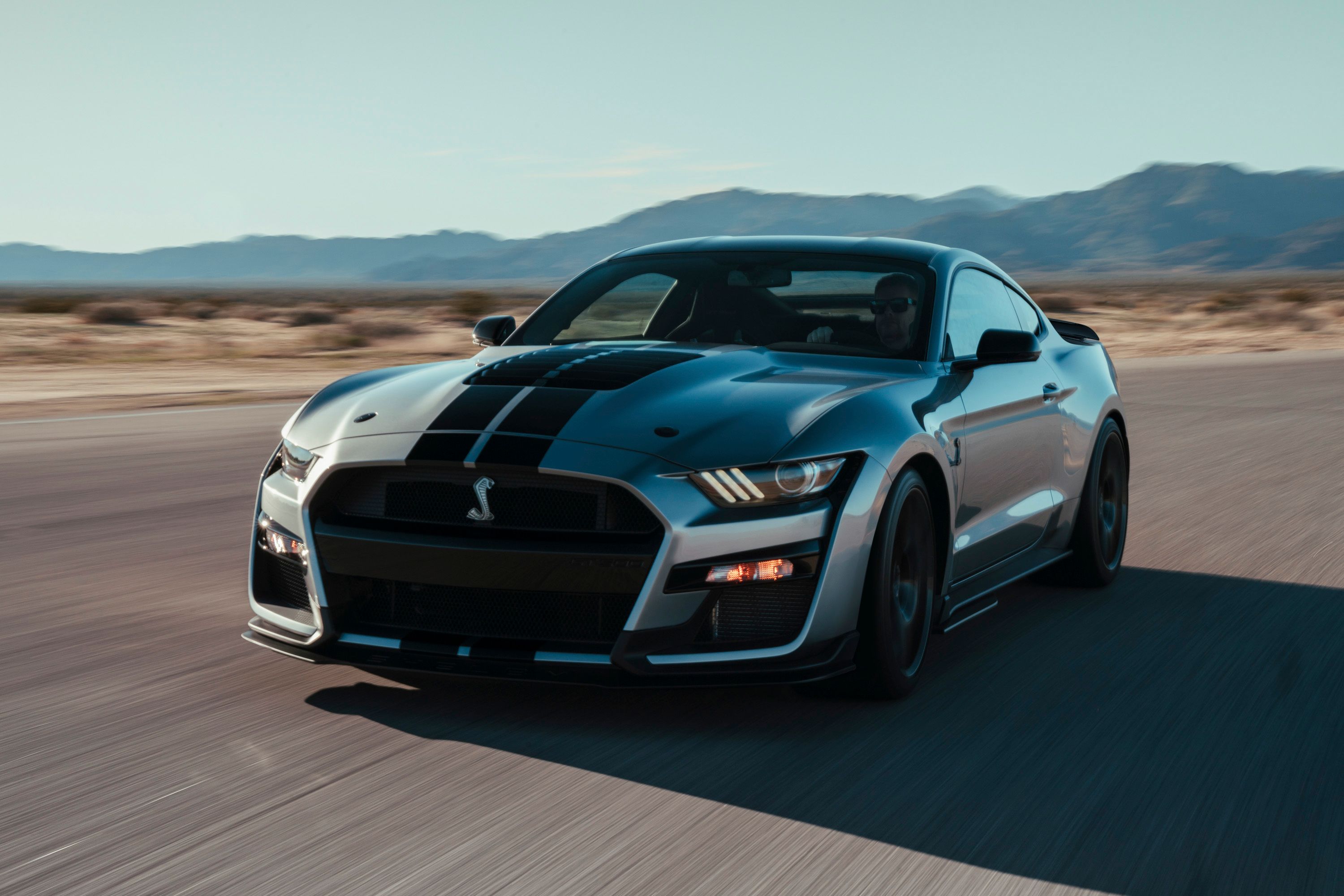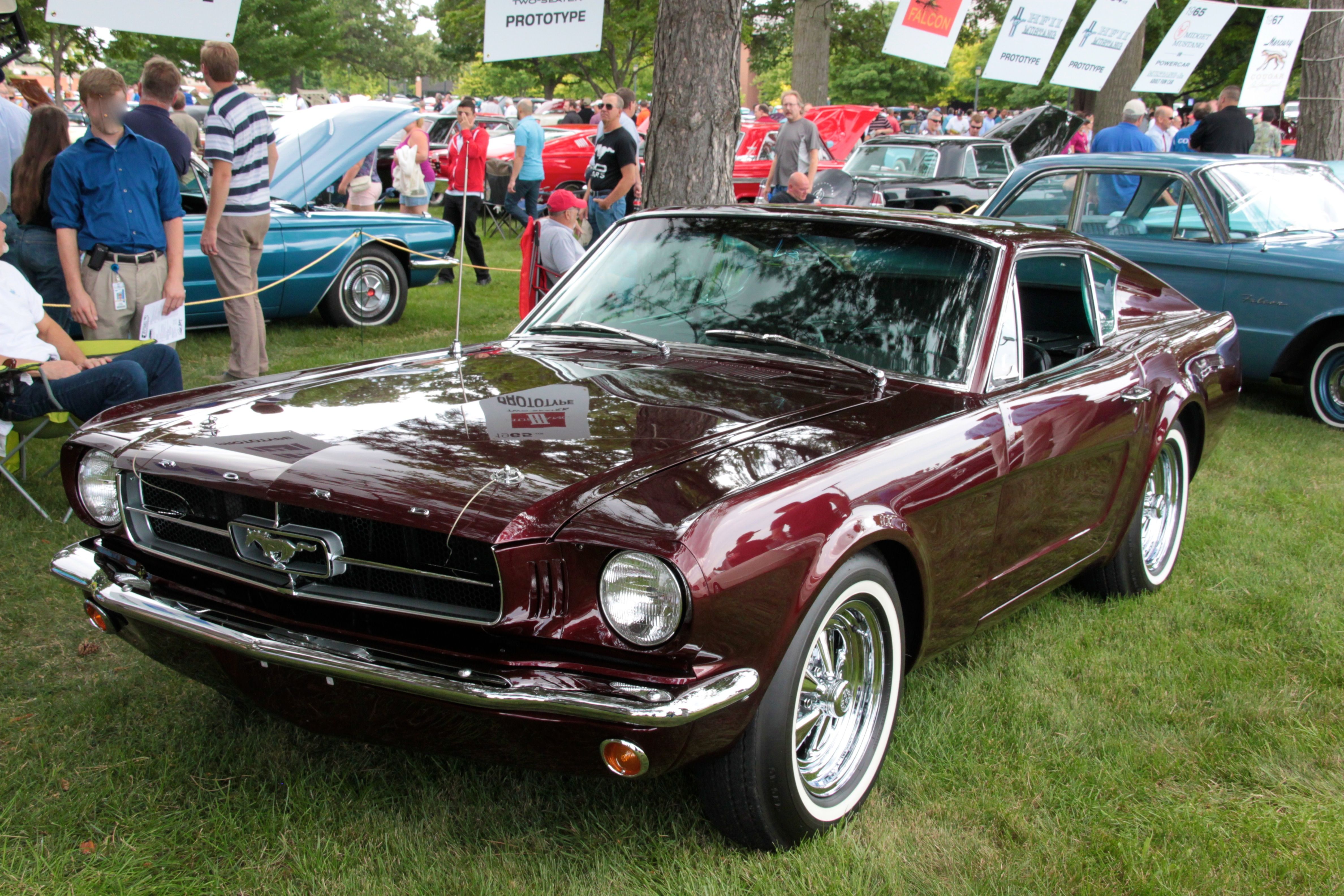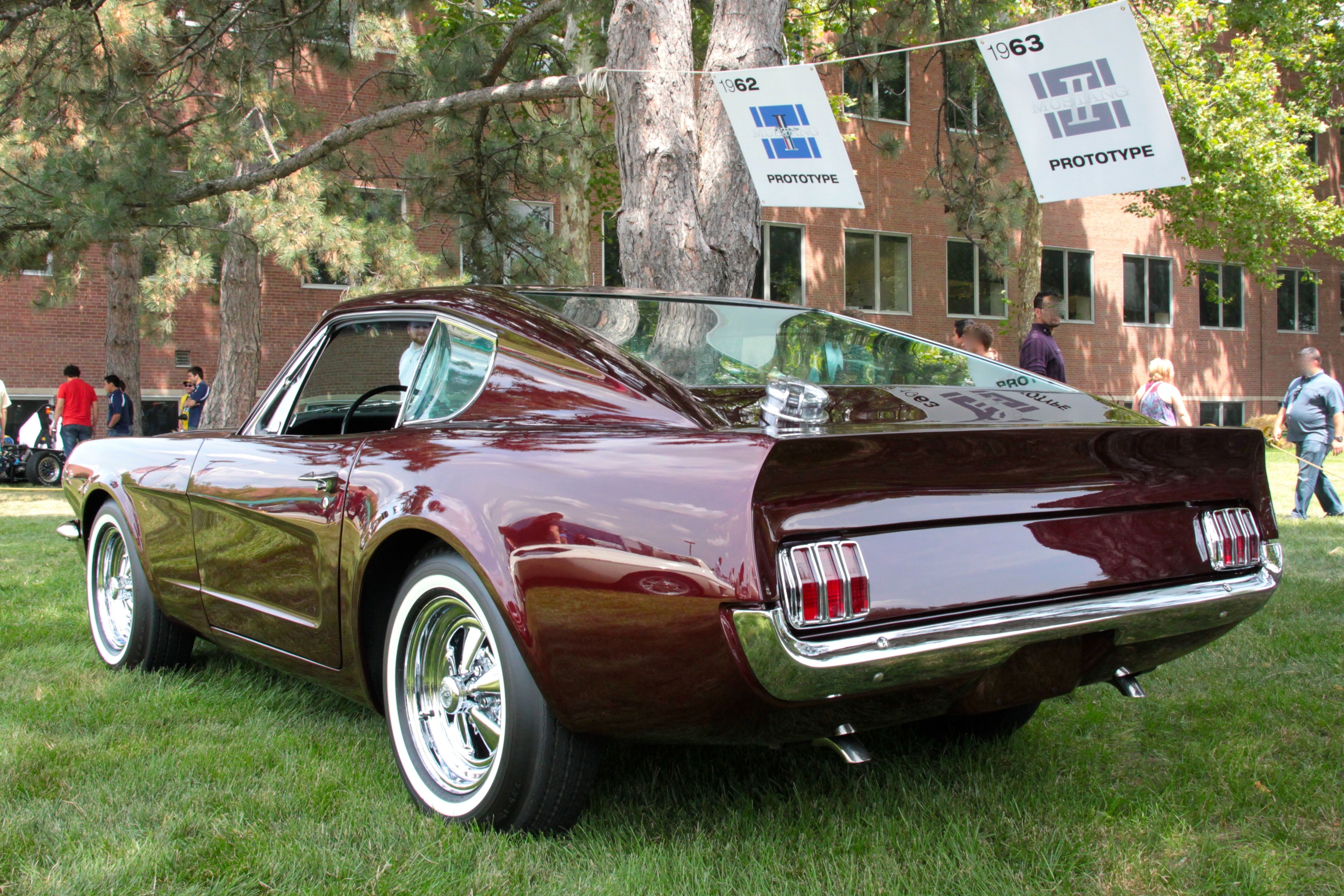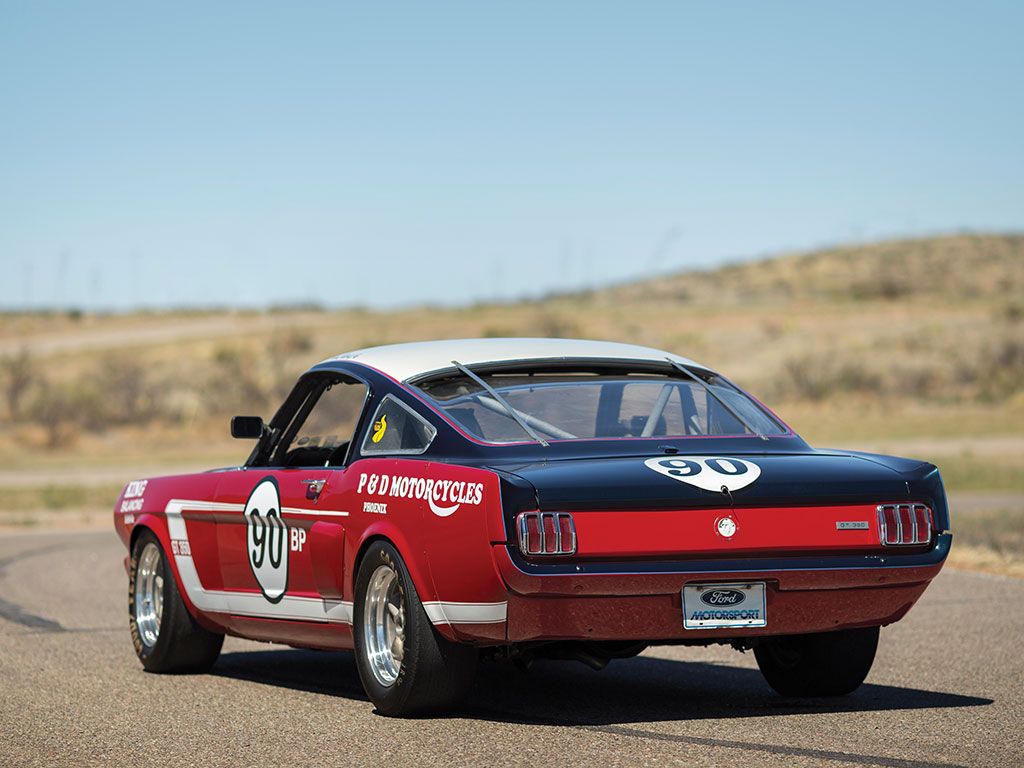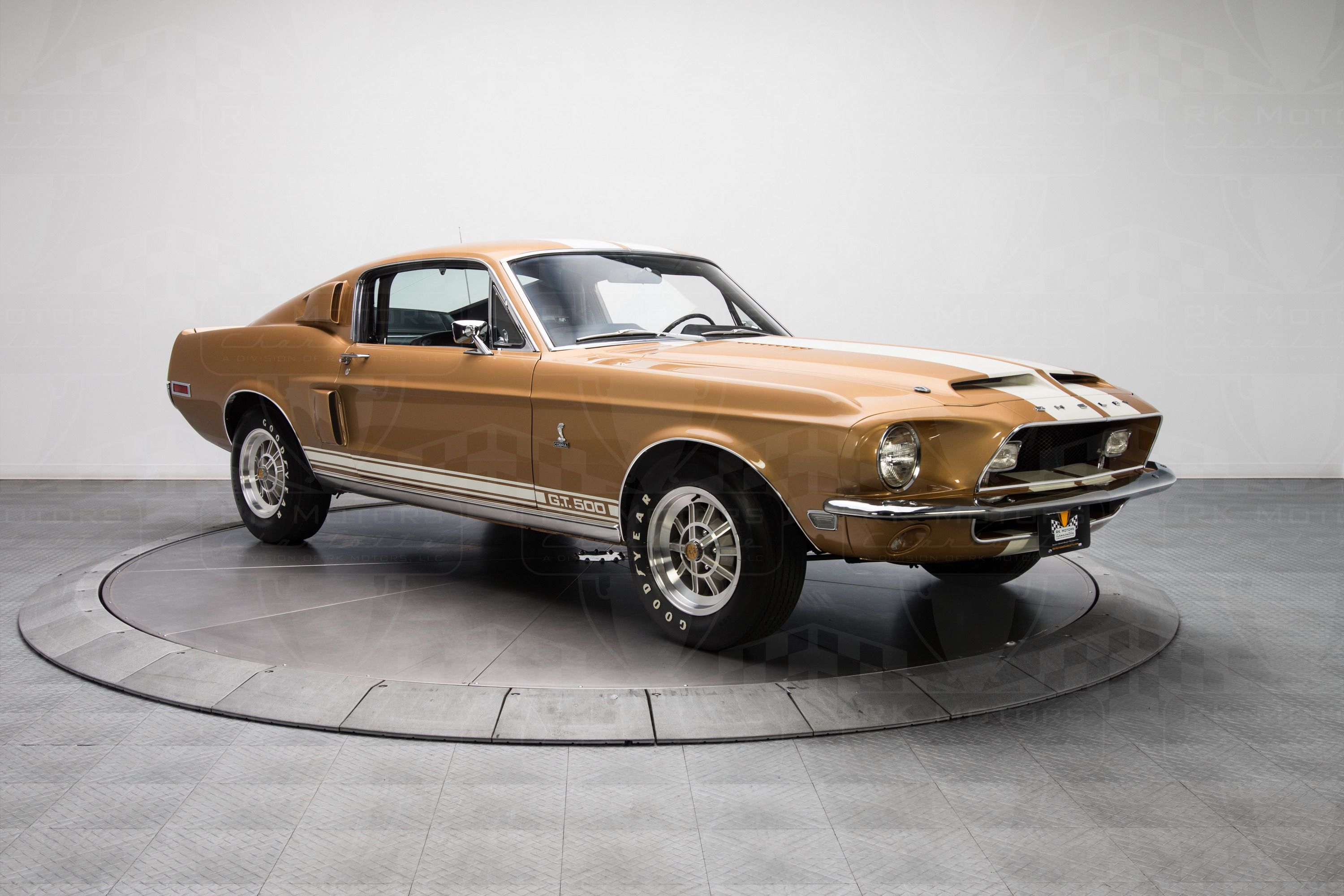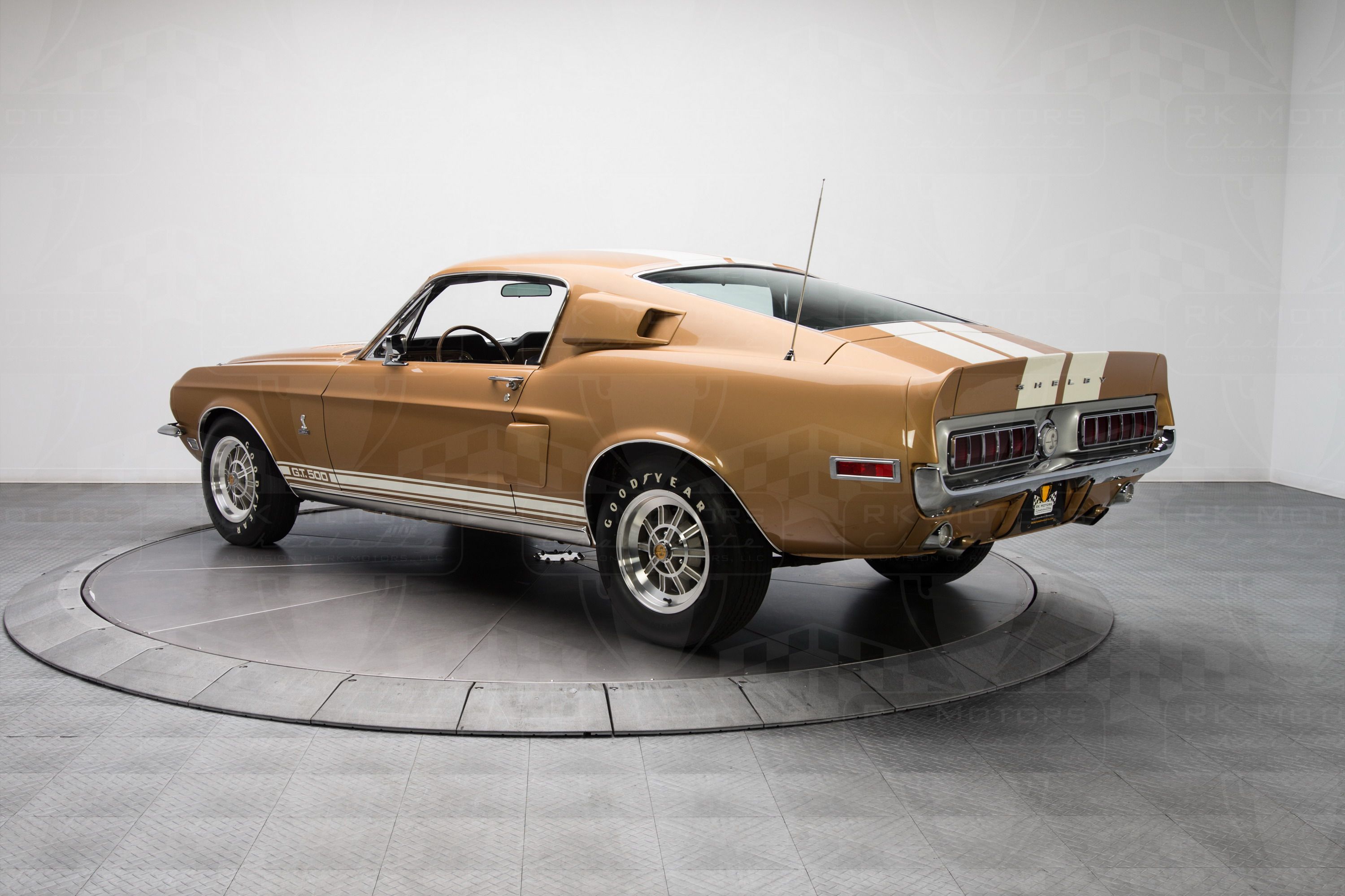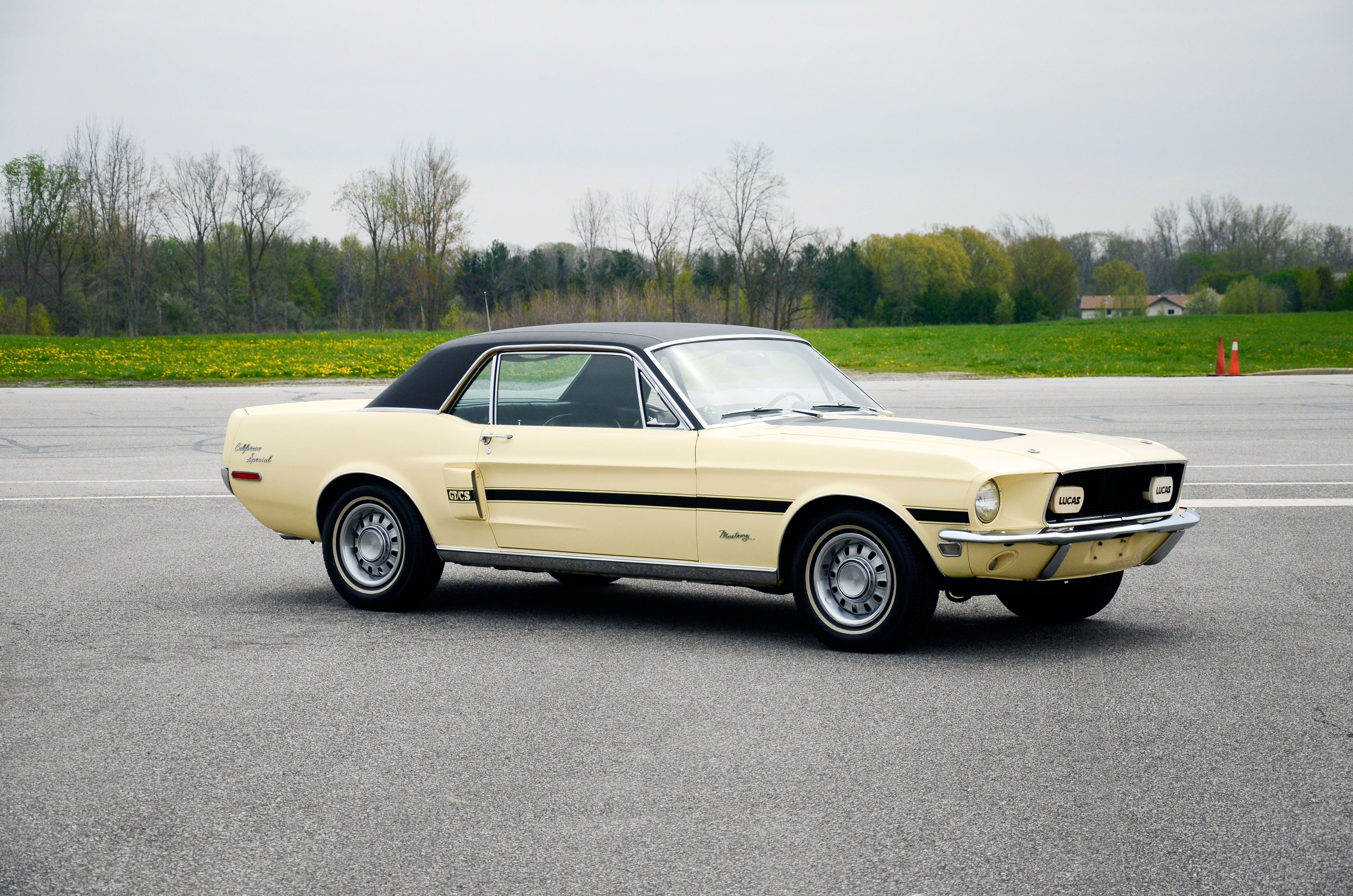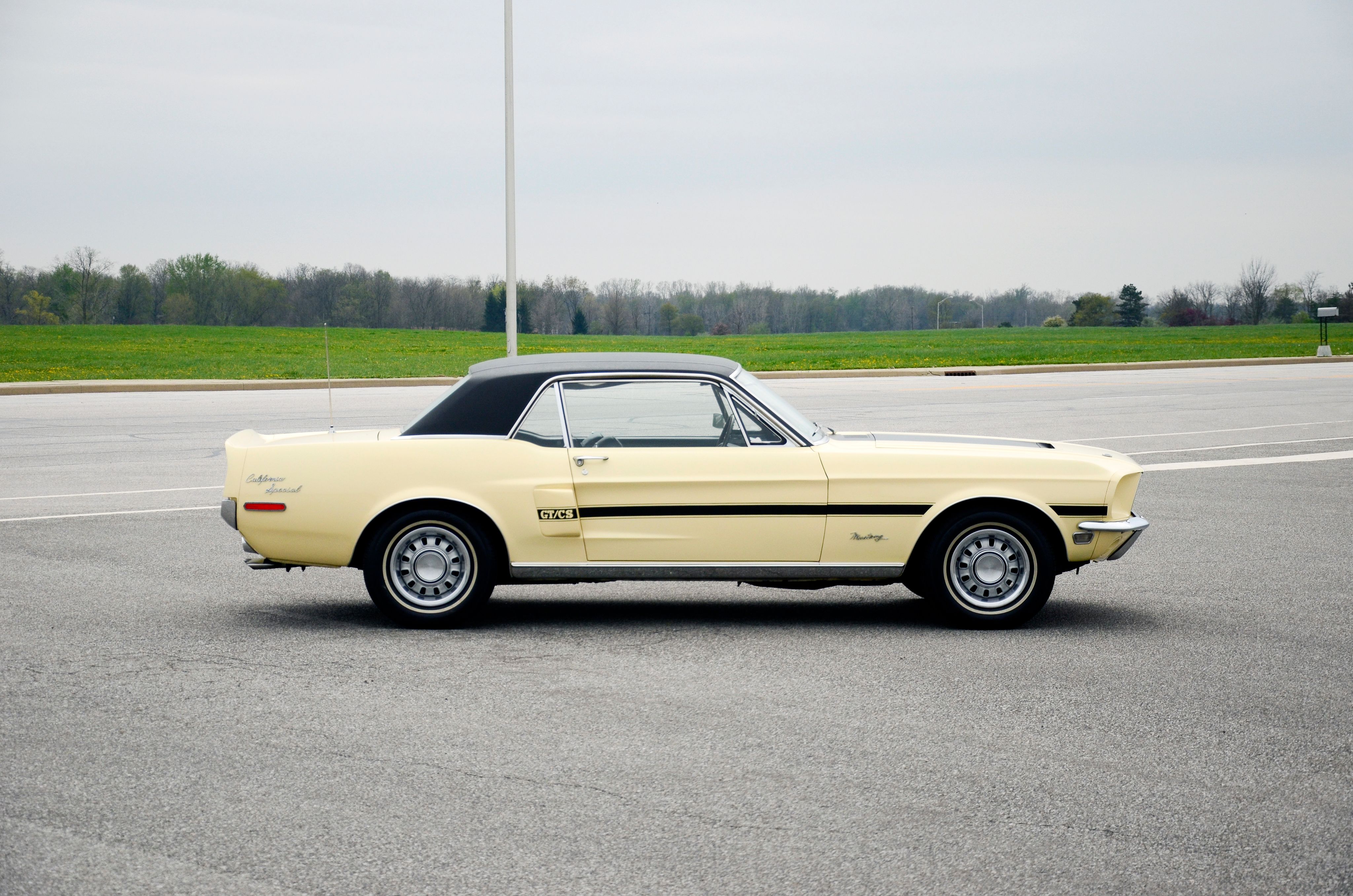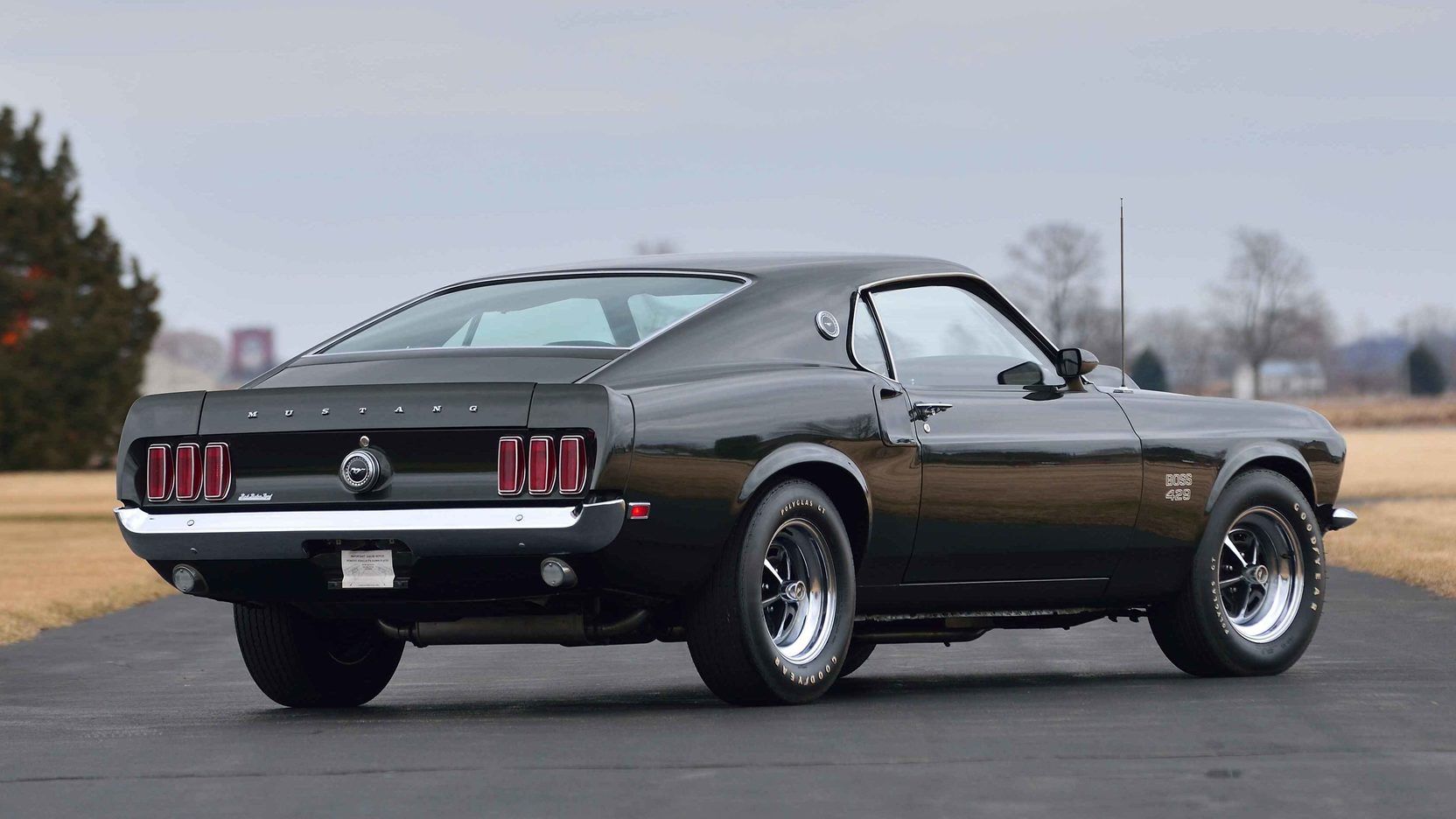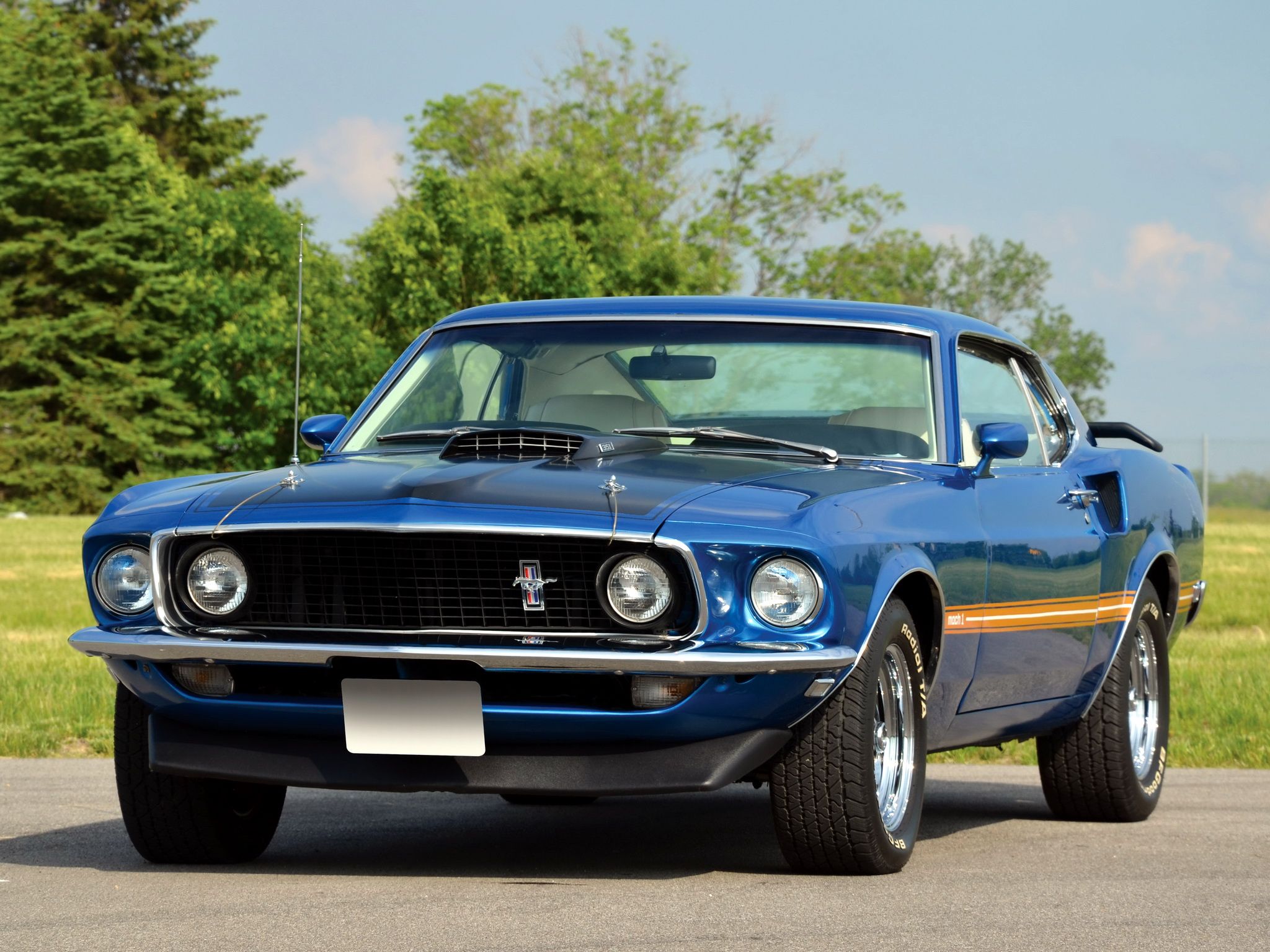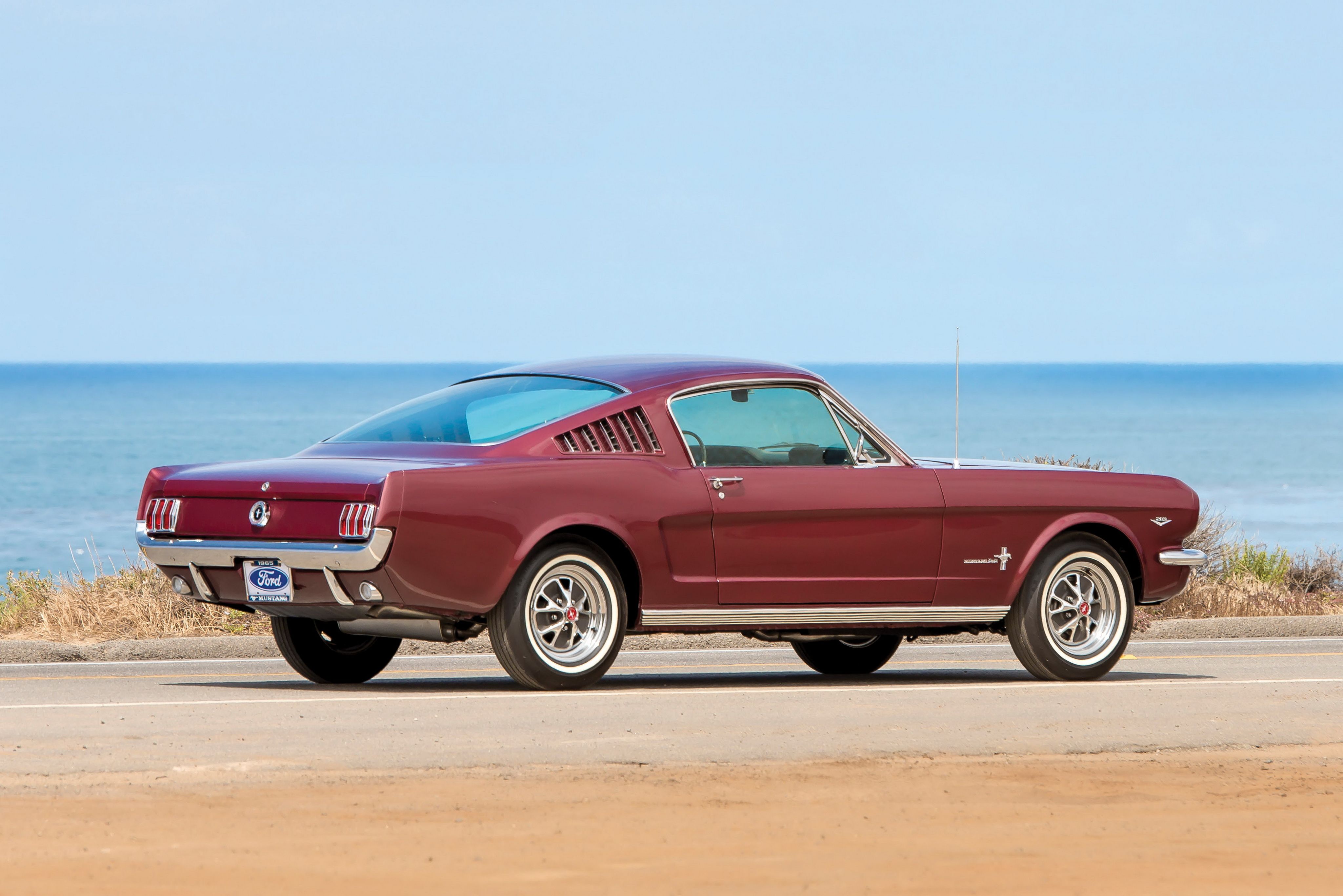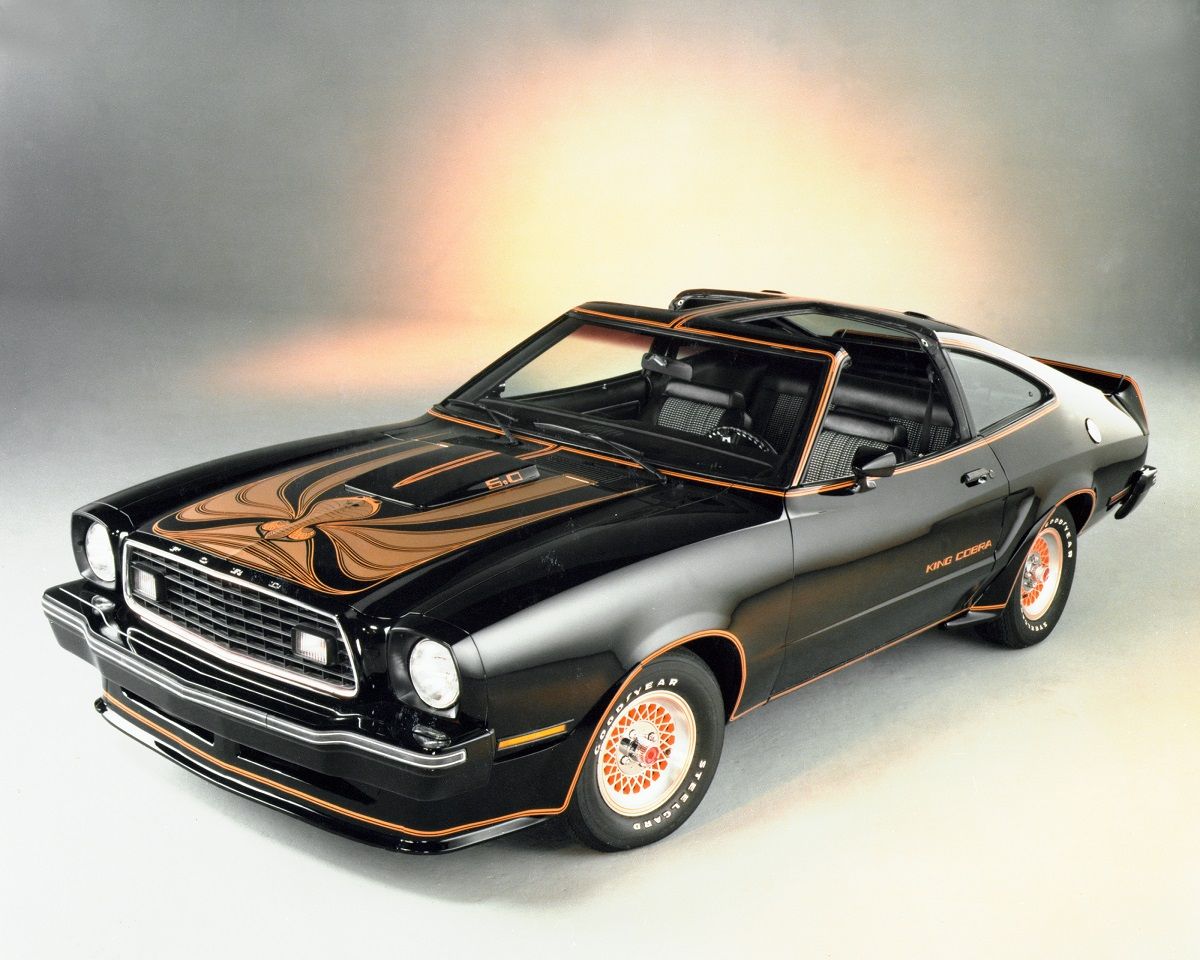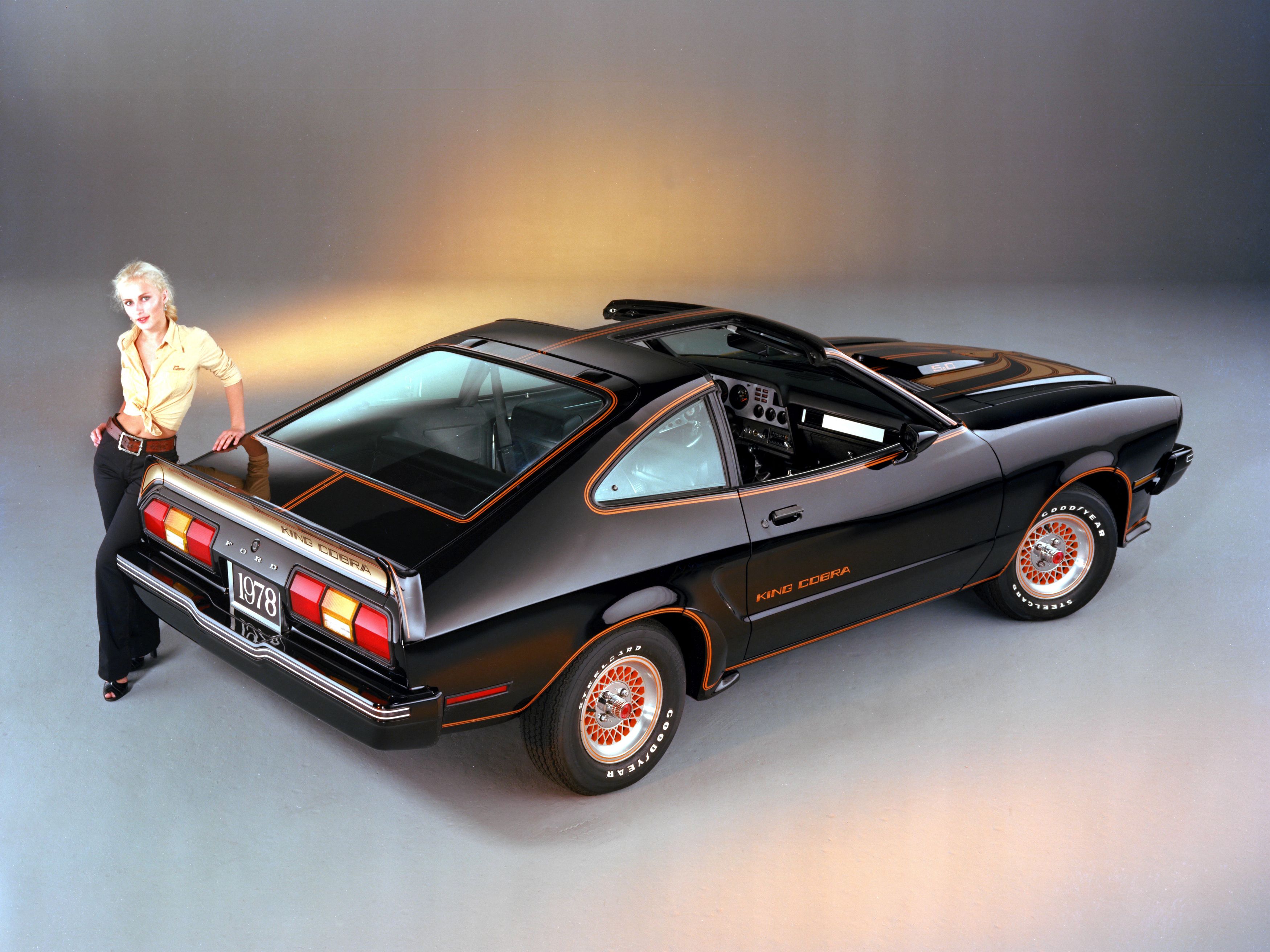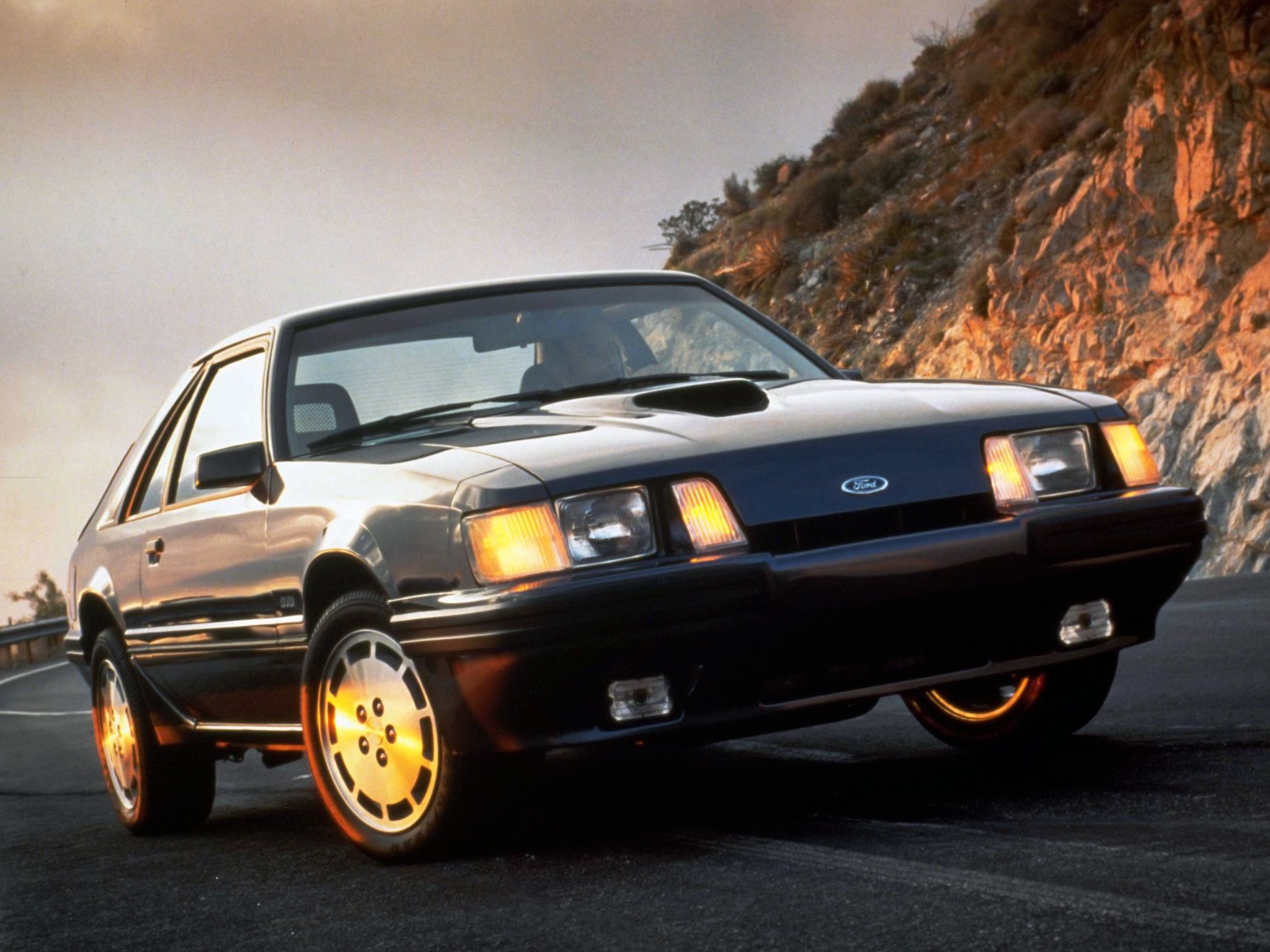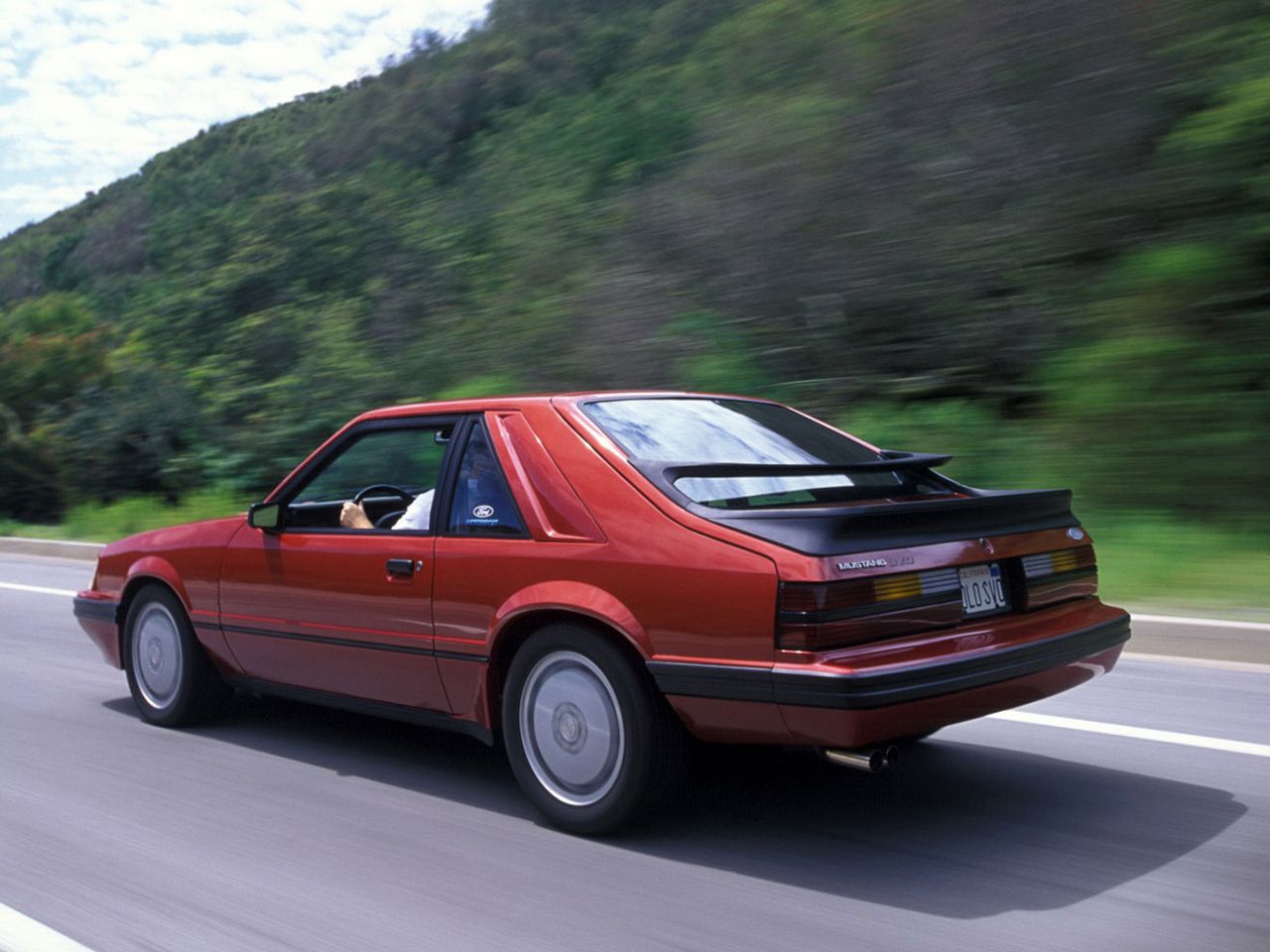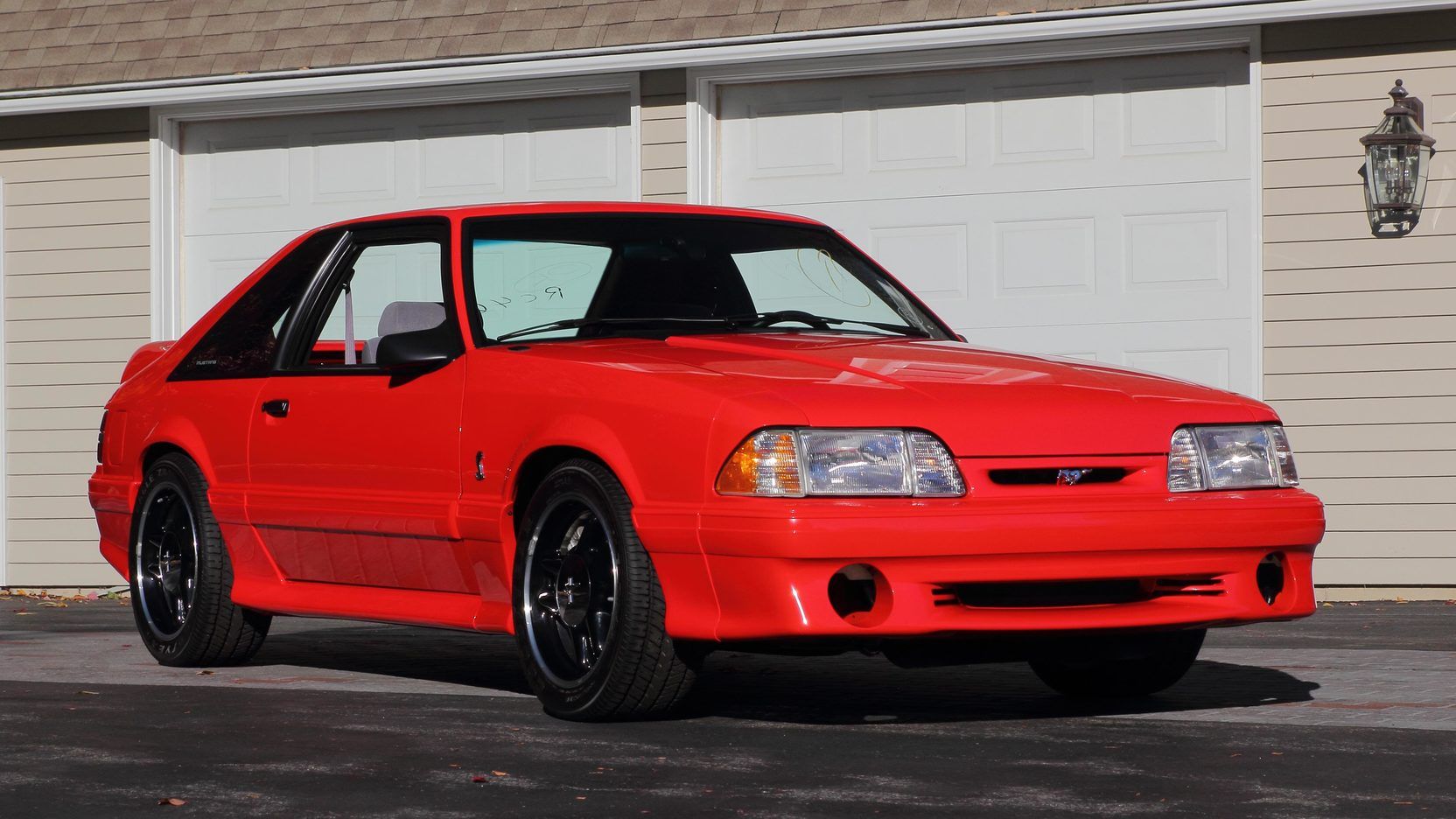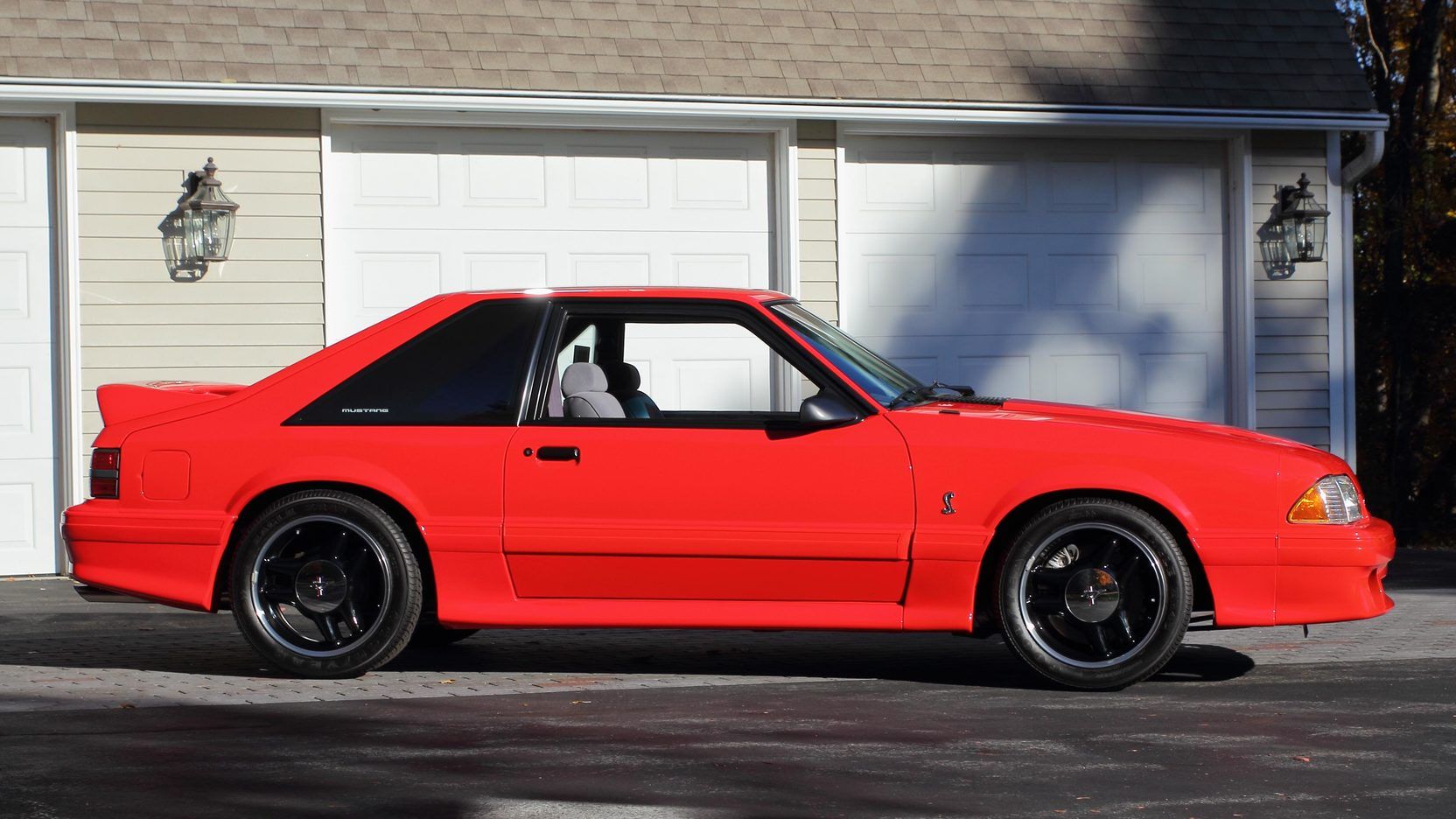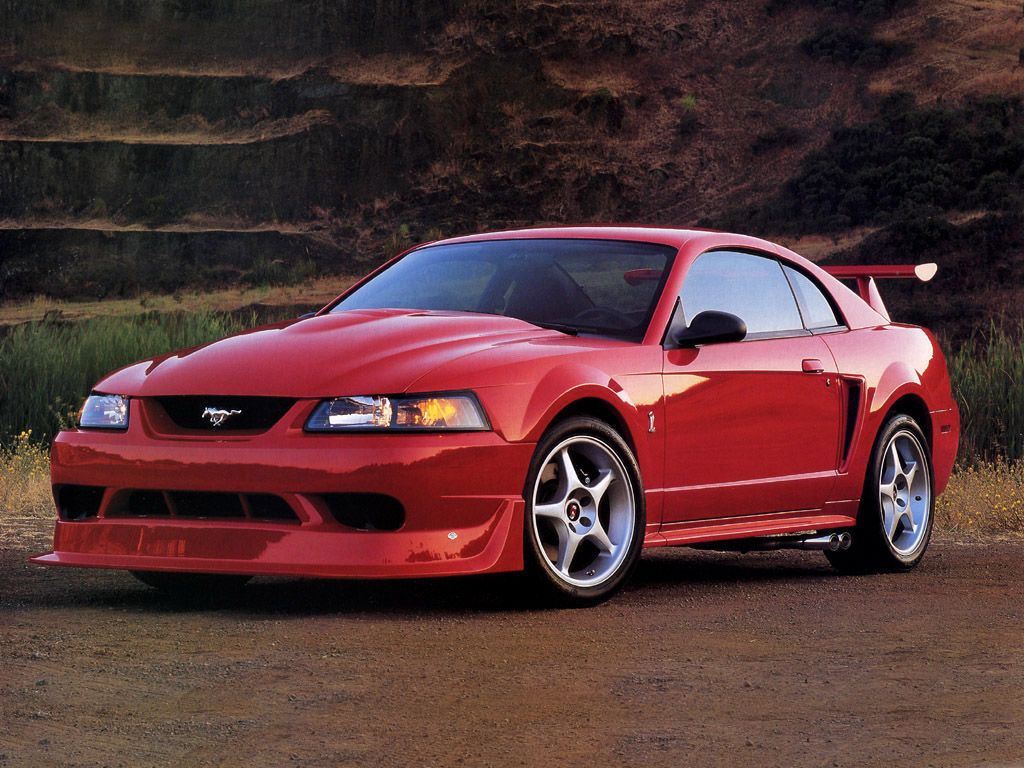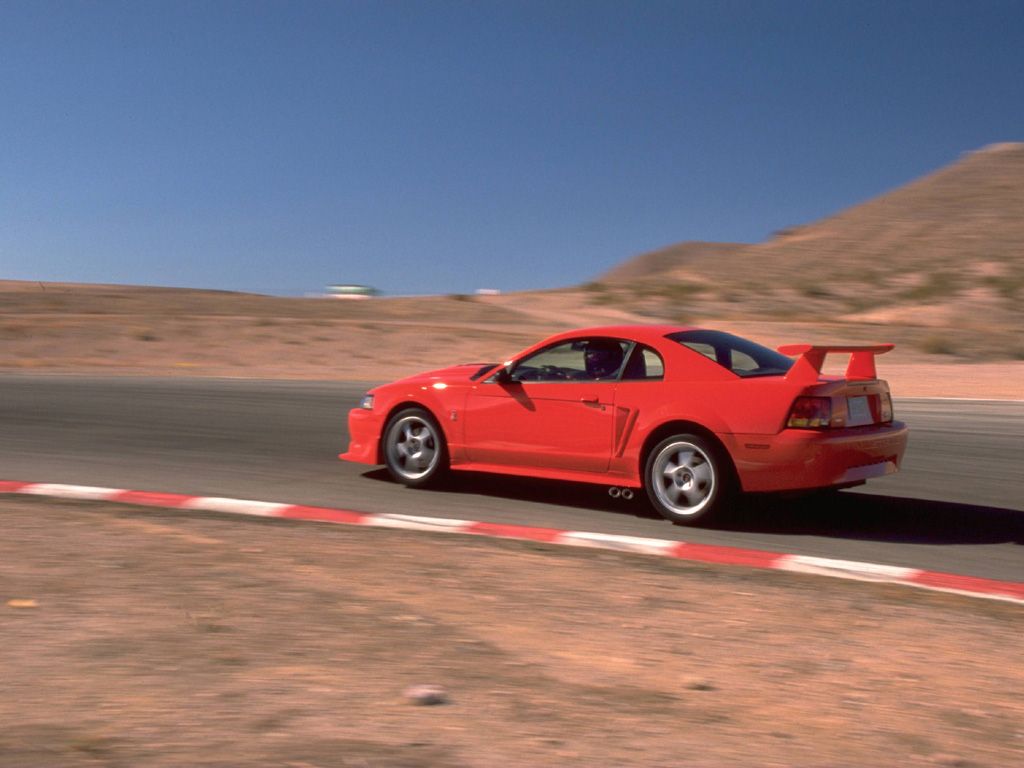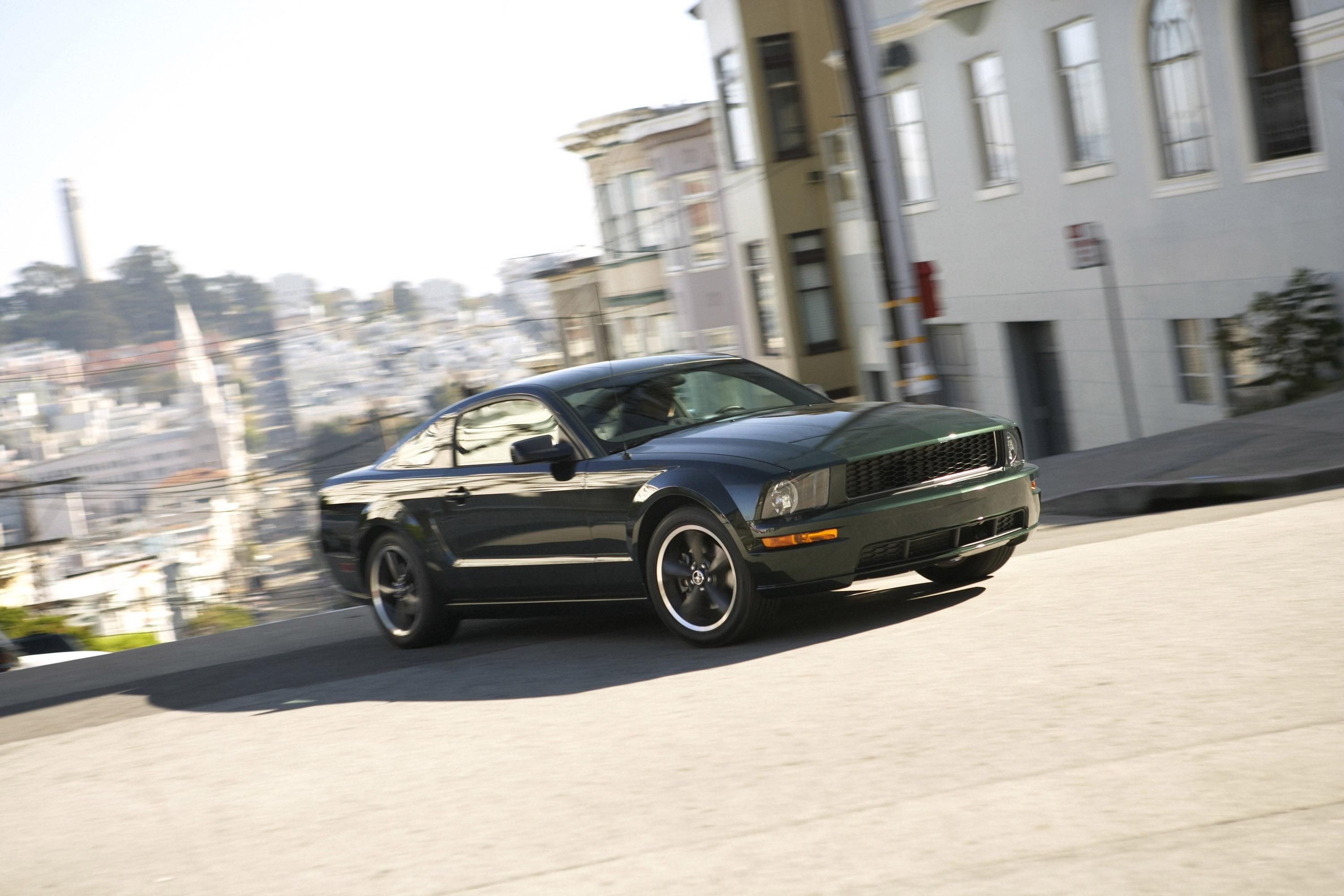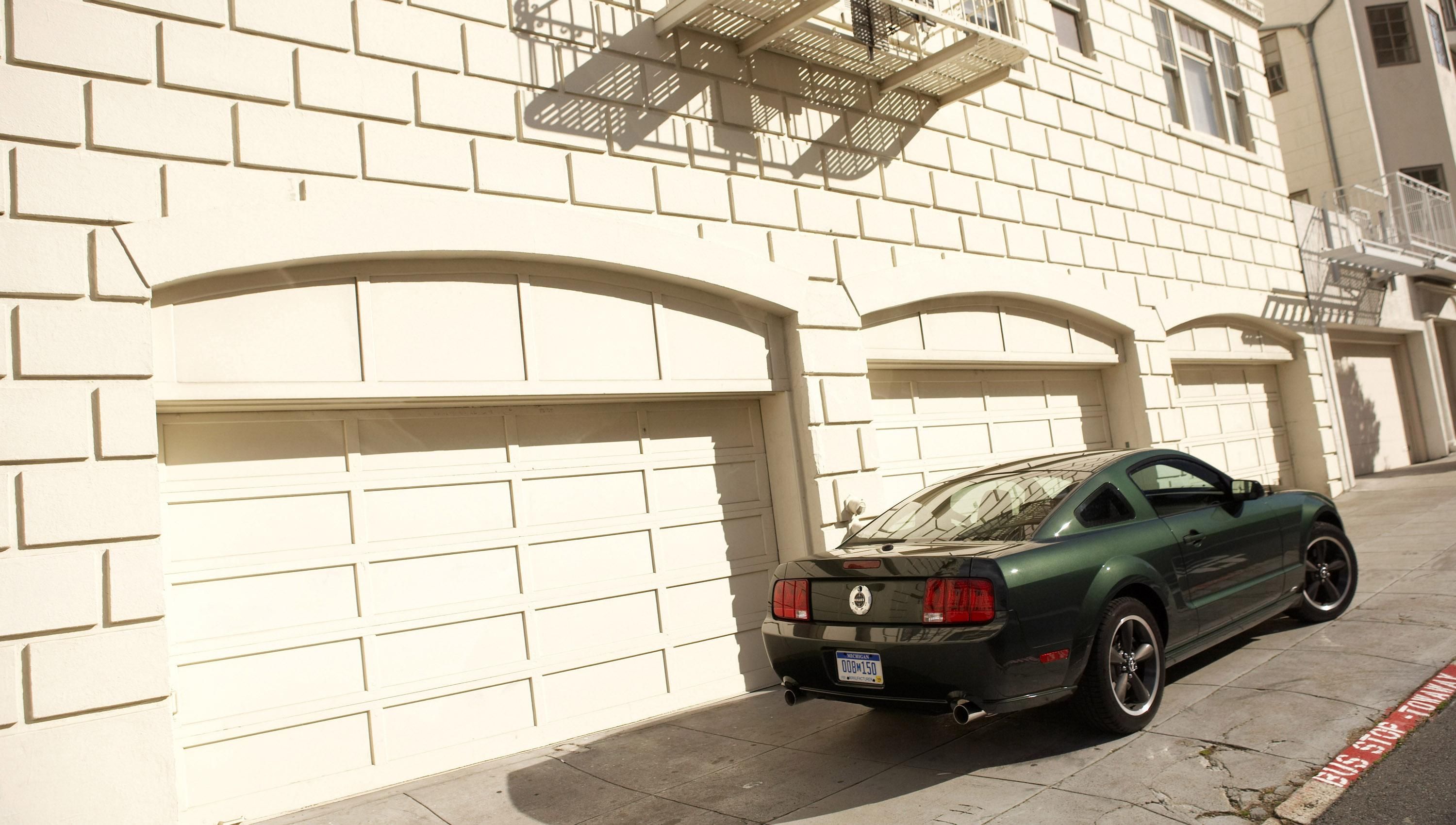When you think of American cars, the Ford Mustang is among the first that comes into mind. It's been around since 1964 and went through six generations that spawned all sorts of models and trims. It debuted as an affordable sports car and it quickly evolved into a powerful muscle car. It then became a not-so-powerful compact and switched to turbocharged performance in the 1980s. It rebound as a muscle car in the 1990s and became a full-fledged sports coupe in the 2010s. It comes with an incredibly vast history and it's one of America's greatest automotive legends. But what are the best Mustang models ever built? Let's find out from the 13-model list below.
1964 1/2 Ford Mustang
This first entry is a bit more generic. It's dedicated to the primordial Mustang, the model that started it all. Introduced four months before the normal start of the 1965 model year, the early Mustang featured VIN numbers for 1965, but it's known as the 1964 1/2 model. Upon its release, the Mustang gained favorable publicity in almost 3,000 newspapers and went on to become a big hit by the end of 1964. Although Ford projected sales of 100,000 units for the first year, the Mustang was sold in more than 300,000 examples. In 1966, Ford had already built its millionth Mustang. From this standpoint, I think that the primordial Ford Mustang deserves a place at the top of this "best Mustang" list.
1964 1/2 Ford Mustang specifications
|
Engine: |
2.8-liter inline-six |
|---|---|
|
Horsepower: |
101 horsepower |
|
Torque: |
156 pound-feet |
|
0-60 mph: |
13.5 seconds |
|
Top speed: |
96 mph |
|
Units built: |
126,500 |
1965 Ford Shelby Mustang GT350
Delivered from the San Jose Assembly Plant to Carroll Shelby's shop, the 1965 GT350 featured extensive modifications. Although the exterior wasn't significantly different from the regular Mustang, the special stripes set it apart.
However, the interior came with a rear-seat delete, while the standard 4.7-liter V-8 engine was fitted with a large Holley carburetor to increase power from 271 to 306 horses. All cars produced for the 1965 model year were painted Wimbledon White with Guardsman Blue stripes. For 1966, the GT350 was diluted with rear standard rear seats and non-white colors.
1965 Ford Shelby Mustang GT350 specifications
|
Engine: |
4.7-liter V-8 |
|---|---|
|
Horsepower: |
306 horsepower |
|
Torque: |
329 pound-feet |
|
0-60 mph: |
6.8 seconds |
|
Top speed: |
120 mph |
|
Units built: |
562 |
Read our full review on the 1965 Ford Shelby Mustang GT350
1967 Ford Shelby Mustang GT500
In 1967, Shelby took things up a notch with the GT500. This pony featured a bigger engine in the form of a 7.0-liter V-8, but this wasn't the only feature that set it apart from the GT350. While the GT350 was more of a no-nonsense, track-ready car, the GT500 came with plenty of comfort features. It was far more comfortable for daily driving and it was also heavier. The V-8 was a Police interceptor unit fitted with an aluminum intake and 2x4-barrel Holley carburetors and produced a whopping 355 horsepower. Although it was heavier than the GT350, the GT500 still employed a range of weight-saving features, like fiberglass front fenders and hood, deck lid, quarter panel extension, and side scoops. The GT500 lived on until 1969 and then returned in the modern era on the fifth- and sixth-generation cars.
1967 Ford Shelby Mustang GT500 specifications
|
Engine: |
7.0-liter V-8 |
|---|---|
|
Horsepower: |
355 horsepower |
|
Torque: |
420 pound-feet |
|
0-60 mph: |
6.5 seconds |
|
Top speed: |
120 mph |
|
Units built: |
2,048 |
Read our full review on the 1967 Ford Shelby Mustang GT500
1968 Ford Mustang California Special
In 1968 auto dealers from California convinced Ford to create a special version of the Mustang specifically for the sunny state. It was called the California Special and even though it was based on the GT, it had plenty of special features inside and out. A hybrid between the Mustang GT and a Shelby design-wise, the California Special looked sportier that the regular 'Stang. The CS was developed alongside other Shelby models in 1968 so it featured some fiberglass body components and hood pins, side scoops, and rear spoiler seen on many of Carroll's performance-oriented models.
It was also fitted with rectangular fog lamps up front and Thunderbird taillights in the rear. Ford also added side stripes with "GT/CS" logos, as well as a rear deck lid stripe, both available in either white, black, red, or metallic blue. The California Special was made available in all standard Mustang colors, but red became the popular choice.
Ford planned a production run of 5,000 units, but only 4,118 were made, include 251 that were rebranded in Colorado as the High Country Special. Ford offered all engine options available that year, but most CS models were fitted with the 4.7-liter V-8.
1968 Ford Mustang California Special specifications
|
Engine: |
4.7-liter V-8 |
|---|---|
|
Horsepower: |
195 horsepower |
|
Torque: |
288 pound-feet |
|
0-60 mph: |
8.5 seconds |
|
Top speed: |
115 mph |
|
Units built: |
4,118 |
1969 Ford Mustang Boss 429
Shelby models were still available in 1969, but Ford rolled out more performance models through the Boss trim. Just like the Shelby GT series, the Boss came in two versions. There was the Boss 302, created to meet Trans Am rules, and the Boss 429, introduced to homologate a new engine for NASCAR use. The latter was fitted with the most powerful engine Ford had built by then. The four-barrel Boss engine displaced 7.0 liters and was capable of 375 horsepower and 450 pound-feet of torque. It was a tad more powerful than the Cobra Jet and almost 100 horses more potent than the smaller 4.9-liter V-8 in the Boss 302. Styling-wise, the Boss 429 was even more aggressive than the Shelby GT500. It featured a big splitter below the front bumper, a massive scoop on the hood, and vents in the rear fenders. Well preserved models can fetch as much as $500,000 nowadays.
1969 Ford Mustang Boss 429 specifications
|
Engine: |
7.0-liter V-8 |
|---|---|
|
Horsepower: |
370 horsepower |
|
Torque: |
450 pound-feet |
|
0-60 mph: |
6.5 seconds |
|
Top speed: |
140 mph |
|
Units built: |
869 |
Read our full review on the 1969 Ford Mustang Boss 429
1971 Ford Mustang Mach 1
The Mustang Mach 1 was introduced in 1969, but I'm picking the 1971 model because I think that the Mach 1 package looks better on the redesigned version of the first-generation muscle car. The 1971 model year saw a heavy facelift applied to the Mustang, one that introduced a fastback body style, a more angular front end, a more aggressive stance overall, and a longer and wider body. Although Ford reduced the amount of unique features it offered with the Mach 1, this trim still came with body-colored bumpers, stripes on the sides and the front hood, honeycomb grilles, and a sportier suspension.
1971 Ford Mustang Mach 1 specifications
|
Engine: |
7.0-liter V-8 |
|---|---|
|
Horsepower: |
370 horsepower |
|
Torque: |
450 pound-feet |
|
0-60 mph: |
5.9 seconds |
|
Top speed: |
152 mph |
|
Units built: |
36,499 |
Read our full review on the 1971 Ford Mustang Mach 1
1978 Ford Mustang II King Cobra
The second-generation Mustang arrived in 1974 as a completely different car, with many changes dictated by the oil crisis. Smaller and significantly less powerful, the Mustang II is now viewed as the least appealing pony car wearing the badge. But it was actually all that bad. Sure, low power was an issue, but the Mustang II was actually pretty popular with yearly sales from 1974 to 1978 having surpasses those from 1969 to 1973. When it comes to the best Mustang trim of this era, I'd go with the King Cobra. Unveiled for 1978, the Mustang II's final year on the market, it looked like a full-fledged muscle car. The big splitter, the rear wing, the bulged hood, and the stripes made it look mean and worthy of the Mustang name. The 4.9-liter V-8 under the hood wasn't exactly inspiring at 133 horsepower, but a 0-to-60 mph sprint of 10 seconds wasn't bad for the era.
1978 Ford Mustang II King Cobra specifications
|
Engine: |
4.9-liter V-8 |
|---|---|
|
Horsepower: |
133 horsepower |
|
Torque: |
243 pound-feet |
|
0-60 mph: |
10 seconds |
|
Top speed: |
104 mph |
|
Units built: |
4,313 |
1984 Ford Mustang SVO
The third-generation Mustang was also a victim of times due to emission and performance regulations, but things started to get better in the 1980s. It happened in 1984, when Ford gave the turbocharged four-cylinder engine it was already using in the standard Mustang a makeover for a model called the SVO. It arrived with 175 horsepower on tap, but output increased to 205 horses in 1985. On top of the more powerful engine, the SVO also featured upgraded suspension, brakes, and steering, a limited-slip differential, and a more aerodynamic body. Granted, it was nowhere near as powerful or appealing as a muscle car era Mustang, but it was the best pony you could buy at the time. The SVO paved the way to the SVT Cobra model that Ford launched in the 1990s.
1984 Ford Mustang SVO specifications
|
Engine: |
turbocharged, 2.3-liter four-cylinder |
|---|---|
|
Horsepower: |
205 horsepower |
|
Torque: |
248 pound-feet |
|
0-60 mph: |
6.8 seconds |
|
Top speed: |
144 mph |
|
Units built: |
9,835 |
1993 Ford Mustang SVT Cobra R
Production of the third-gen Mustang was scheduled to end after the 1993 model year, but Ford decided to roll out a new performance model to end it all.
The run also included a more aggressive model called the Cobra R. The "R" designation stood for "Race" and deleted various components to make the car lights. The Cobra R didn't have a radio, speakers, wiring and antenna, air conditioner, fog lights, rear seats, and no power options. It also featured bigger brakes, a stiffer chassis, Eibach springs and adjustable Koni shocks and struts. The V-8 engine was rated at 235 horsepower and 280 pound-feet of torque and pushed the SVT Cobra R from 0 to 60 mph in just 5.7 seconds. A race-ready coupe, the SVT Cobra R was built in just 107 units, all finished in red.
1993 Ford Mustang SVT Cobra R specifications
|
Engine: |
5.0-liter V-8 |
|---|---|
|
Horsepower: |
235 horsepower |
|
Torque: |
280 pound-feet |
|
0-60 mph: |
5.7 seconds |
|
Top speed: |
140 mph |
|
Units built: |
107 |
2000 Ford Mustang SVT Cobra R
The success of the 1993 SVT Cobra prompted Ford to continue production in 1994 when the redesigned, SN-95 Mustang arrived. A new Cobra R was also introduced in 1995. But it's the 2000 model that really stands out. The facelifted fourth-generation Mustang looks far more aggressive than the original SN-95 and Ford had updated the drivetrain for this version. Built in just 300 units, the Cobra R came with a 5.4-liter V-8 rated at an impressive 385 horsepower and 385 pound-feet of torque. A race car for public roads, the 2000 Cobra R was fitted with a more aerodynamic body with wider fenders, Bilstein shocks and struts, Brembo brakes, and a hydro-mechanical differential. The Cobra R also included parts from Recaro, Eibach, BF Goodrich, Borla, Tremec, and Dana, all giving the coupe tremendous track capability.
2000 Ford Mustang SVT Cobra R specifications
|
Engine: |
5.4-liter V-8 |
|---|---|
|
Horsepower: |
385 horsepower |
|
Torque: |
385 pound-feet |
|
0-60 mph: |
4.4 seconds |
|
Top speed: |
177 mph |
|
Units built: |
300 |
Read our full review on the 2000 Ford Mustang SVT Cobra R
2008 Ford Mustang Bullitt
Ford took advantage of this for the first time in 2008, when it launched a fifth-generation Mustang with features inspired by the car that McQueen drove in the movie. Available in Highland Green or black, the Mustang Bullitt was devoid of the usual GT badges, but also came with a spoiler delete and a unique Bullitt gas cap. The unique pony-less grille, the 18-inch gray wheels, and larger exhaust pipes rounded off the package. The 4.6-liter V-8 engine came from the Mustang GT, but the suspension was stiffer and the rear axle had different ratio. The Bullitt Mustang returned in 2019 on the sixth-generation model, but the 2008 model remains the first authentic tribute car that generated the most hype.
2008 Ford Mustang Bullitt specifications
|
Engine: |
4.6-liter V-8 |
|---|---|
|
Horsepower: |
315 horsepower |
|
Torque: |
325 pound-feet |
|
0-60 mph: |
5.0 seconds |
|
Top speed: |
140 mph |
|
Units built: |
5,808 |
Read our full review on the 2008 Ford Mustang Bullitt
2012 Ford Mustang Boss 302 Laguna Seca
2012 saw the return of the iconic Boss 302 badge on the fifth-generation Mustang. The package included a more powerful V-8 engine and various updates for improved performance. The Boss 302 also borrowed the aerodynamic package of the Boss 302R race car, so it looked unique compared to other 'Stangs from the era. The 302 Laguna Seca was a further upgrade to the Boss 302. Ford basically moved it even closer to the race car by adding Recaro seats, a limited-slip differential, stiffer suspension and a larger rear wing. Ford also removed the rear seats to add an x-brace to increase structural rigidity and added performance tires and racing brake ducts.
2012 Ford Mustang Boss 302 Laguna Seca specifications
|
Engine: |
5.0-liter V-8 |
|---|---|
|
Horsepower: |
440 horsepower |
|
Torque: |
380 pound-feet |
|
0-60 mph: |
4.6 seconds |
|
Top speed: |
146 mph |
|
Units built: |
1,500 |
Read our full review on the 2012 Ford Mustang Boss 302 Laguna Seca
2020 Ford Shelby Mustang GT500
The sixth-generation Mustang also deserves a place on this list. After all, it's the most modern Mustang available and the fact that Ford ditches the live rear axle makes it the most agile pony to date. I'm going with the Shelby GT500 because it's basically the ultimate sixth-generation Mustang.
2020 Ford Shelby Mustang GT500 specifications
|
Engine: |
supercharged, 5.2-liter V-8 |
|---|---|
|
Horsepower: |
760 horsepower |
|
Torque: |
625 pound-feet |
|
0-60 mph: |
3.5 seconds |
|
Top speed: |
180 mph |
|
Units built: |
5,000 |
Read our full review on the 2020 Ford Shelby Mustang GT500
Ford Mustang Q&A
Which Mustang is the best Mustang?
Well, that's a tough question because it depending on so many things. Do you like classic or modern? Are you a fan of race-ready or daily drivers? Do you like sleepers or Mustangs that have "performance" written all over them? Ford built a long list of cool Mustang models that can be considered the best. It's actually why I put this 13-model list together. I think these are the best Mustangs ever built. However, if I were to pick just one, I'd go with the 1964 1/2 model. It's the car that started it all. We wouldn't be here without that specific Mustang.
What is the best selling Ford Mustang?
The first-generation model is the best-selling Mustang to date. Sold for almost 10 years with various facelifts and upgrades, the first-gen Mustang was immensely popular and Ford moved no fewer than 2.98 million units. The third-gen model comes second with 2.61 million examples sold in 14 years on the market.
No other generation managed to hit the two-million mark. The fourth-gen moved 1.6 million units, while the second-gen sold 1.1 million examples. The fifth-gen Mustang didn't hit one million at around 925,000 units, while the current sixth-gen Mustang was sold in almost 560,000 examples as of May 2020.
What is the best model year of Mustang?
1966 was the best year for the Mustang, when Ford sold no fewer than 607,500 units. That's more than the sales of the sixth-generation Mustang (2014 to 2020) combined. 1965 was almost as good with 559,500 units delivered. In third place comes 1967 with 472,000 examples. No other model year has hit the 400,000-unit mark since then.
When it comes to best selling years of each generation, the Mustang II hit its peak in 1974 with 386,000 units. The third-gen model sold 370,000 in 1979, its first year on the market. The fourth-generation pony set its record in 2000, when the facelift model moved 215,500 units. The fifth-gen Mustang peaked at 166,500 in 2006, while the sixth-gen model had its best year in 2015 with 122,349 examples sold.
What’s special about the Ford Mustang?
The Mustang is one of the most iconic cars built in America. It hit the market as an affordable, easy-to-maintain vehicle that was also powerful and fast. It quickly evolved into a performance benchmark during the muscle car era and it managed to survive the oil crisis and other automotive challenges from the 1970s and 1980s. Unlike its main rivals, it remained in production continuously and while sales have dropped in recent decades, it remains a desirable car and a symbol of American performance and engineering.
Why do Ford Mustangs always crash?
Well, they don't always crash, but Mustangs have a bad reputation for crashing into curbs or into crowds during car events. But that's only because some Mustang drivers are reckless and tend to show off a bit too much. No Mustang will crash if you handle it properly.

